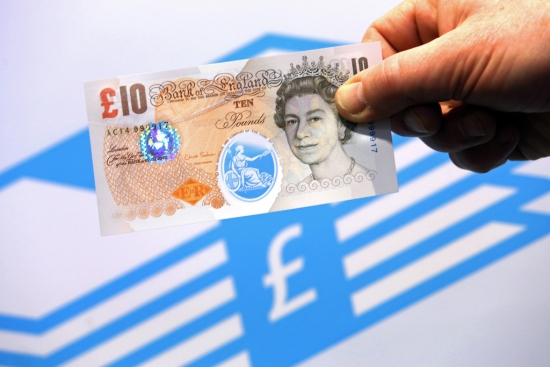Finding a £10 or £20 note in a pocket is usually welcome; the exception being when the pocket in question has just exited the spin cycle in the washing machine. Every year, hundreds of British consumers manage to “lose” their cash in this way – but from 2016, obsessively checking clothing for money before putting it in the laundry basket will become a thing of the past thanks to the introduction of plastic banknotes.

During the pre-Christmas period, Bank of England representatives visited a number of shopping centres throughout the UK in order to determine whether consumers would welcome a move from the traditional banknotes to ones created from polymer. Almost 13,000 consumers participated in the survey, with 87 per cent supporting the move, 6 per cent opposing and 7 per cent remaining neutral in the debate.
The Bank of England believes there are a number of benefits to plastic banknotes, claiming they are cleaner and last 2.5 times as long as their traditional equivalents. As a result, the £5 note featuring an image of Winston Churchill will be introduced in 2016 followed a year later by the £10 note featuring Jane Austen.
Polymer banknote manufacturer Innovia Security, which already produces polymer notes for 23 countries around the world, is expected to be announced as the supplier of the polymer material nearer the time of the official launch. Should this be the case, the firm plans to establish a polymer production plant in Wigan, creating numerous jobs for local residents.
Bank of England governor, Mark Carney, cited the pros to introducing the banknotes in the near future.
He said; “Ensuring trust and confidence in money is at the heart of what central banks do.
“Polymer notes are the next step in the evolution of banknote design to meet that objective.
“The quality of polymer notes is higher, they are more secure from counterfeiting, and they can be produced at lower cost to the taxpayer and the environment.”
In terms of changes which must be made in order to accommodate the new material, there really is very little pressure on retailers and businesses. The new notes will be smaller in dimension, meaning that ATMs will have to be altered in order to be able to carry them, but the responsibility to make alterations will be upon the banks.
Retailers will also benefit in the sense that polymer notes are more difficult to counterfeit. A small transparent panel will be a feature of all notes, enhancing protection against counterfeiters and negating the need for retailers to install ultra violet lights to manually examine cash transactions.
With technology advancing every day and environmental issues at the forefront of all business operations, the move to plastic banknotes could well be one of the most significant steps in advancing the financial system of the UK. All consumers have to remember is to keep them as far away from irons as possible!
Previous Post
Boris Island rejected by Airports Commission